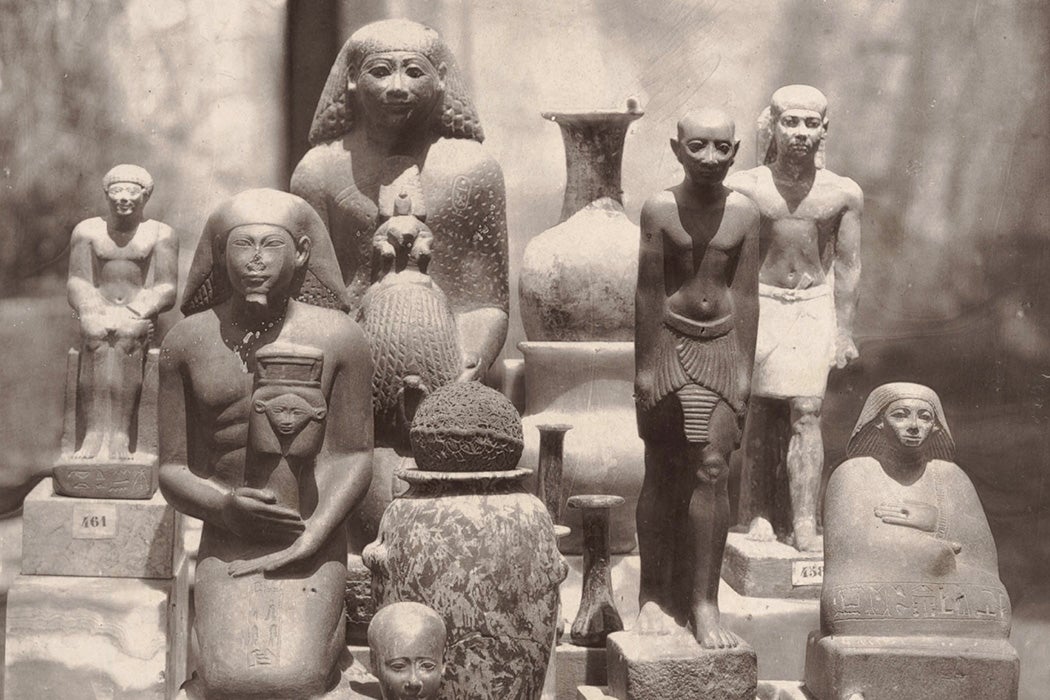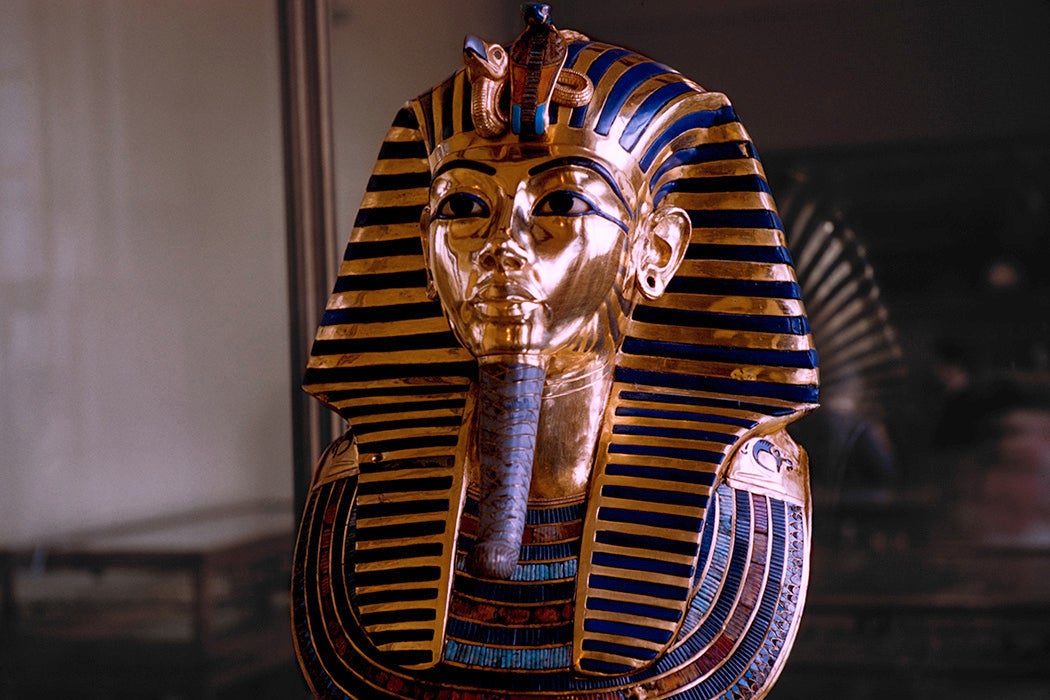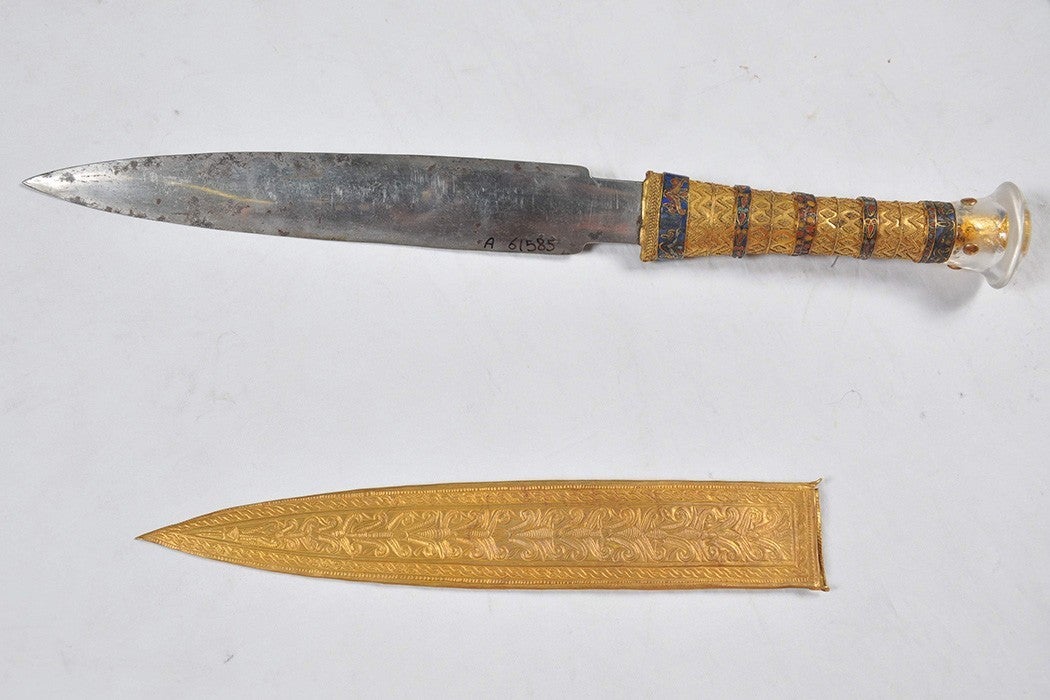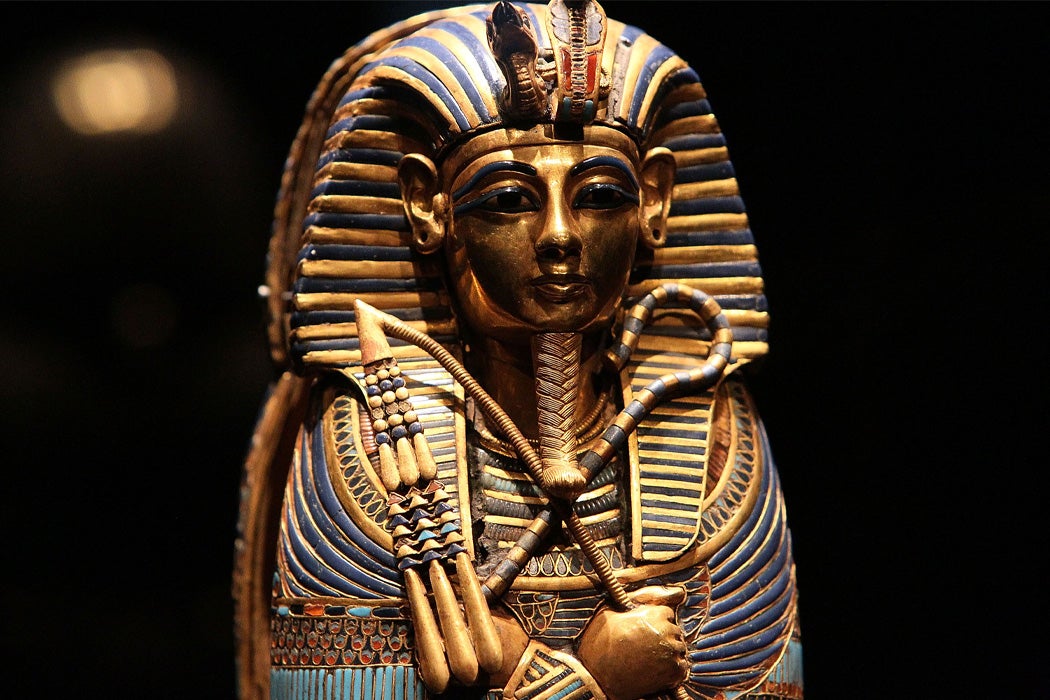After more than twenty years of planning and construction, the Grand Egyptian Museum (GEM) is slated open at the end of 2023. The largest museum dedicated to pharaonic culture, the GEM builds on a long history of museum exhibition in Cairo and its suburbs. Much of this history has been captured in museum catalogues, particularly those written in the founding years of what is now known as the Egyptian Museum in Cairo (EMC). Several of these catalogues, as well as historical tour guides and journals written by visitors to the Middle East, have been digitized by Rice University and made available, free of charge, via the Travelers in the Middle East Archives on JSTOR.
The collections to be showcased in the GEM are millennia old, of course, but efforts to display statues, sarcophagi, and scarabs date back only two hundred years or so. Before 1835, when Mohamed ‘Ali Pasha, governor of Egypt (r. 1805–1848), issued a decree to stop the unchecked export of antiquities, the Nile corridor served as Egypt’s own open-air museum, albeit one troubled by sand and water. Following the 1835 edict, a museum managed by Youssef Diaa Effendi was established near Cairo’s Azbakeya Gardens. All new discoveries went to Azbakeya to be considered for inclusion in displays designed by Hakikan Effendi.
Weekly Newsletter
The collections shifted to the Citadel of Salah El-Din in 1851, but as Donald M. Reid writes, Mohamed Saʿid Pasha (r. 1854–1863) gifted the objects to Archduke Maximillian of Austrian in 1855. Just a few years later, Saʿid Pasha established a new antiquities program to be led by Frenchman Auguste Mariette. Mariette had arrived in Egypt in 1850 under the sponsorship of the Louvre, charged with acquiring Coptic manuscripts. When he was unable to purchase any, he spent the Louvre’s money on excavations at Saqqara, the necropolis of ancient Memphis.
Mariette’s excavations in Saqqara were illegal (there was a reason he began to work under the cover of darkness), and before he finally stopped digging, he had sent some 230 cases—7,000 objects—from Egypt to France. It’s ironic, then, that Saʿid Pasha appointed him director of the new Department (Service) of Antiquities. But that’s politics. Though formally a province of the Ottoman Empire and almost entirely under British control, Egypt, for reasons not unrelated to the Suez Canal, delegated control of its ancient past to the French.

With his appointment, Mariette also became director of a new antiquities museum housed in a converted warehouse in the Cairo suburb of Boulaq. His method of organizing the collections can be seen in the 1872 Album du Musée de Boulaq, the first illustrated museum catalogue published in Egypt. In the album’s introduction, he credits photographers Hippolyte Délié and Émile Béchard with the idea for an illustrated book, though he claims to have “welcomed it with eagerness.” The album opens with a few “picturesque views” of the building’s setting and exhibition halls, but most of the forty black-and-white plates show objects representative of Mariette’s five categories of objects: religious, funerary, civil, historical, and Greek and Roman monuments.
Mariette notes that the location of the Boulaq Museum should be considered temporary and that Khedive Ismaʿil Pasha (r. 1867–1879) was planning to found a monumental museum in the new quarter of Cairo. As the opening plate of the album shows, the museum stood on the banks of the Nile, making it vulnerable to floods. And in fact, in 1878, an inundation closed the museum for the three years it took to repair water damage.
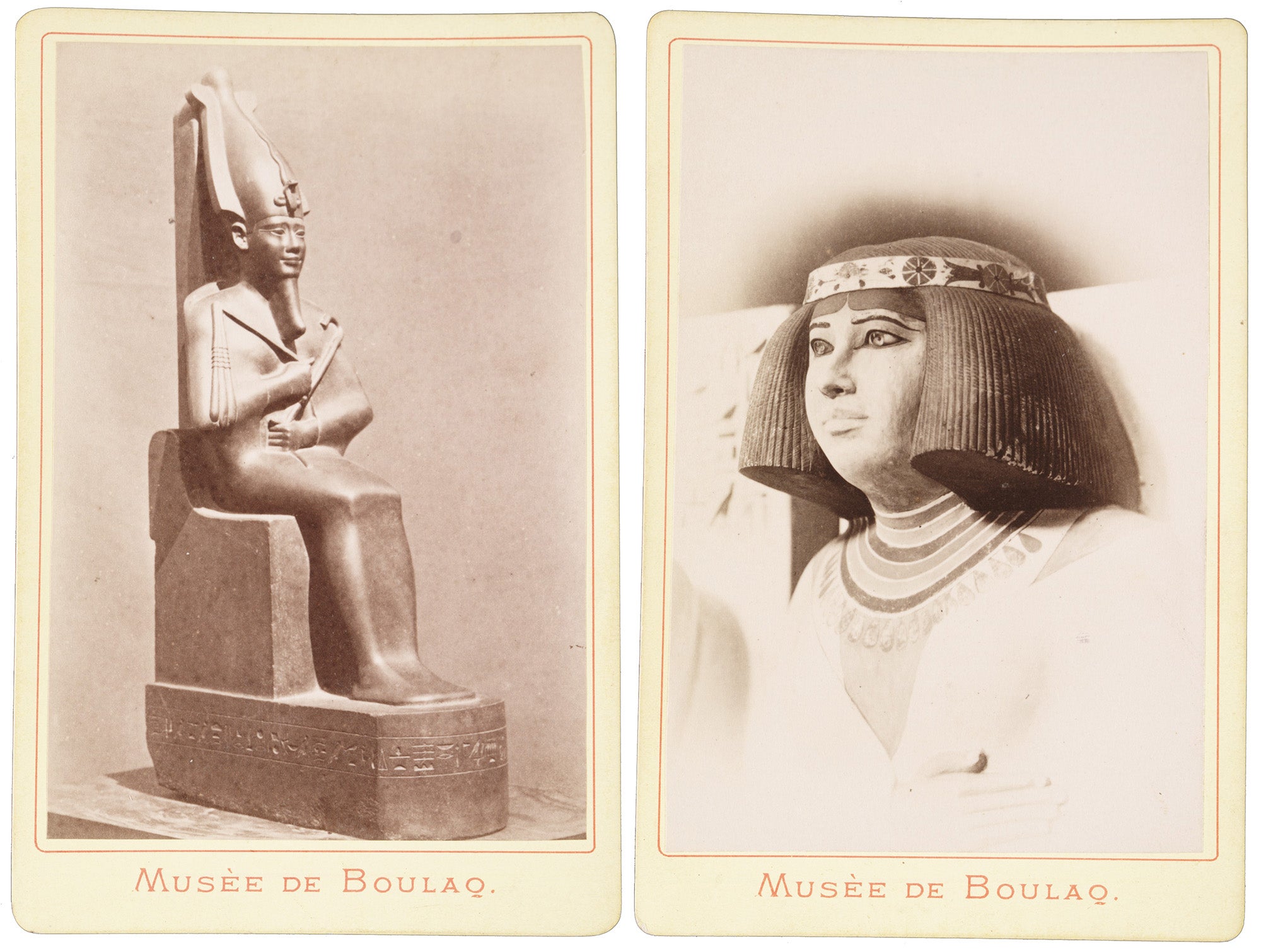
Mariette died in January 1881, and Khedive Tewfik Pasha (r. 1879–1892) appointed French archaeologist Gaston Maspero Director General of the Excavations and Antiquities of Egypt. Before Maspero’s arrival, Émile Brugsch, the museum’s assistant curator, issued a brief guide to some of Boulaq’s treasures in the form of a set of photo cards. Many of the objects shown in Monuments Choisis Du Musée De Boulaq, including a painted limestone statue of Nofret, wife of Rahotep from the 4th Dynasty, and a greywacke statuette of Osiris, are still considered treasures of the EMC today. Other objects depicted include a diorite statue of the pharaoh Khafre (Chephren) and a small statue of the priest Ka-aper. One of the few wooden sculptures surviving from ancient times, Ka-aper’s statue had been found by Mariette in Saqqara.
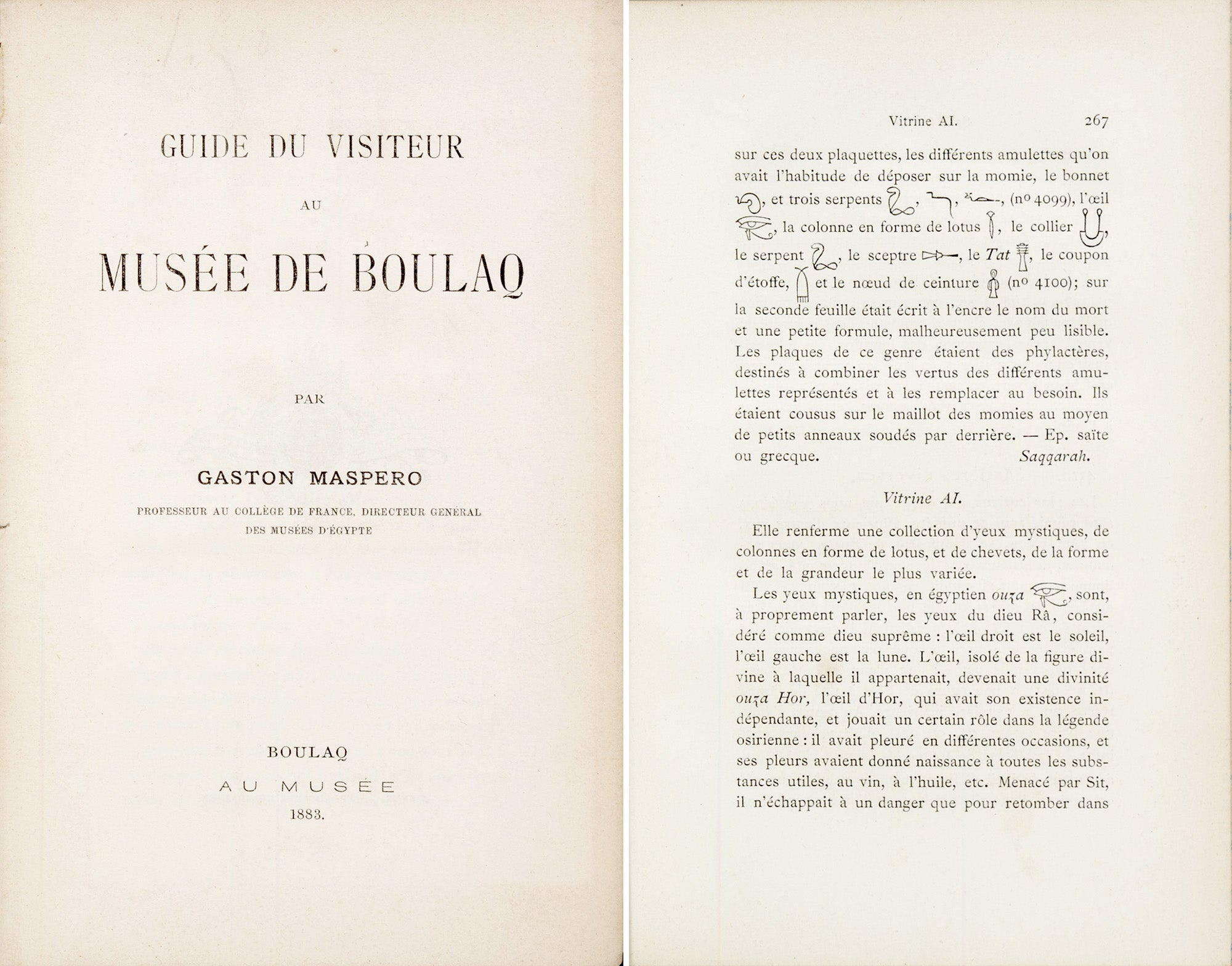
Maspero arrived in September 1881 to supervise both the museum and the excavation and export of antiquities. In 1883, he published Guide du Visiteur au Musée de Boulaq, a “little book” (his words, but it was 438 pages long, not including the floor plan and notes) to document the museum’s expanded galleries. As the title suggests, he was writing for visitors, so instead of grouping objects into functional categories, he describes them by gallery. Those galleries, however, still partially adhered to Mariette’s organizing logic: Maspero lists the Old Kingdom Room; Funerary Objects Room; Royal Mummies Room; Graeco-Roman Room; and so on. He also admits that some objects were “out of order” and should be moved when the museum expanded; galleries were always works in progress.

The continued threat of flooding, along with the “discovery” of the first Deir el-Bahri Royal Cache (locals had known about the cache since 1871 and—possibly because they were tortured by authorities—revealed the location in 1881), prompted more discussion of a new museum, but nothing immediately came of it. Maspero left the Antiquities Service in 1886, and Eugène Grébaut took over. Grébaut attempted to revive a publishing scheme initiated by Mariette, who had planned to issue an annual bulletin describing the collections and announcing new acquisitions. Maspero had finished Mariette’s first volume, but lack of funds prevented him from doing anything more. Grébaut, supported by Cairo’s French Institute of Oriental Archaeology and Maspero, brought out additional bulletins under the title Le Musée Égyptien: Recueil de Monuments et de Notices Sur Les Fouilles d’Egypte. These catalogues show that epigraphy was becoming increasingly important, with discussions and representations of hieroglyphic inscriptions being added to descriptions of objects.
Grébaut would become known among archaeologists for two things: his work with the Priestly Cache of Deir el-Bahari and his lack of interest in the administrative work of the Antiquities Service. But before he left the directorship, he oversaw the museum’s long-desired move to a new building. In 1890, with the help of Georges Daressy, a French archaeologist who had joined the museum in 1887, the collections were moved to the palace of Ismaʿil Pasha in Giza. Grébaut hung on until 1892, when Jacques de Morgan reluctantly accepted the position of Director-General of Antiquities. Making no claims to be an Egyptologist, de Morgan nonetheless led several projects—at the museum and in the field—in Giza and elsewhere.
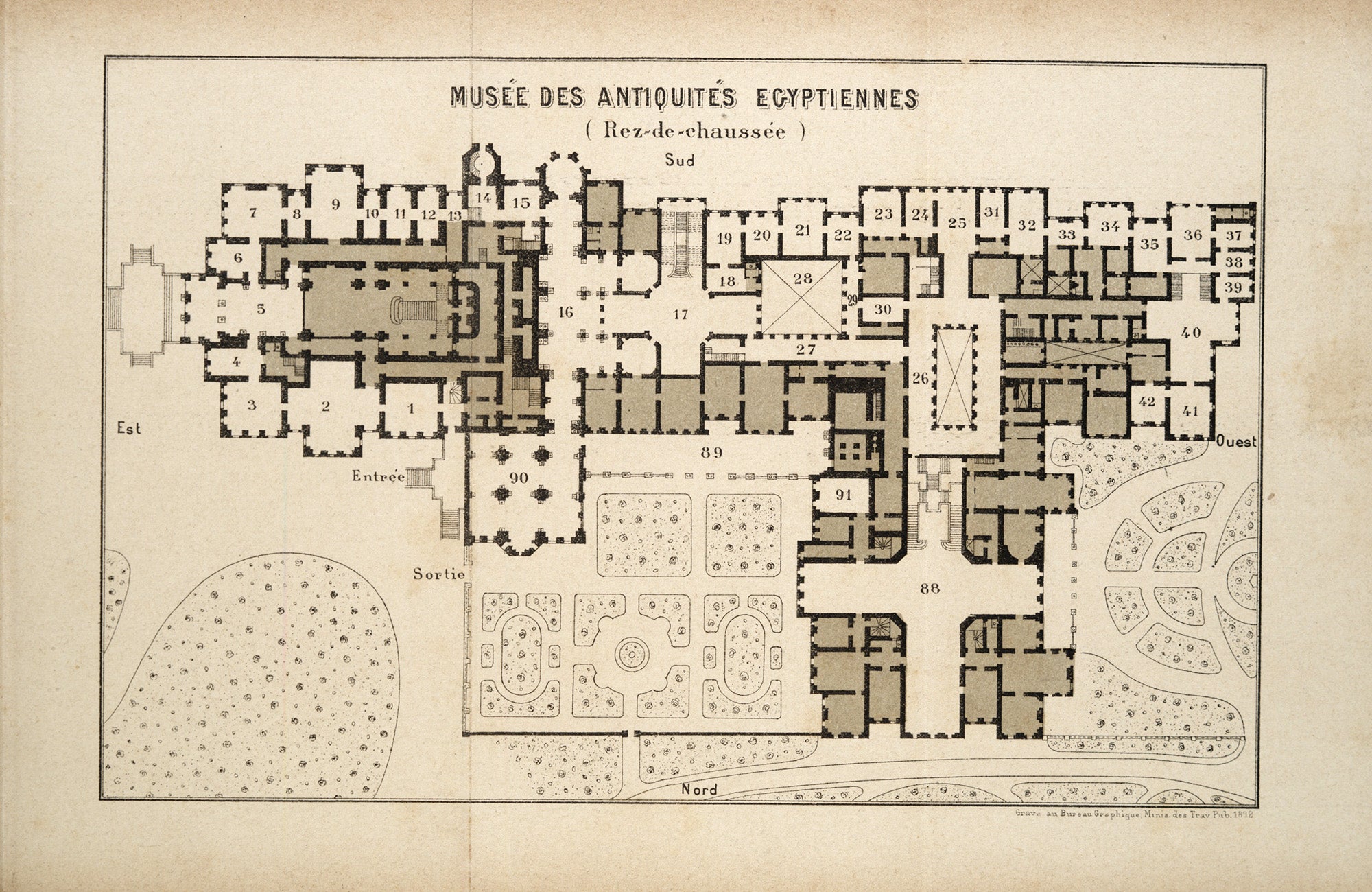
In the lengthy prologue to the 1892 catalogue, de Morgan attributes Grébaut’s lack of energy to sickness and fatigue. Grébaut had managed to open forty-five rooms of the palace to the public, but de Morgan inherited “stores packed with antiquities and the galleries still unfinished.” He spent six months working with Brugsch, Daressy, and others to finish forty-six additional galleries, which opened to the public in the fall of 1892. The subsequent catalogue shows a determined effort to discipline the collections spatially—gathering Old Kingdom objects in galleries 1–13, Middle Kingdom objects in galleries 14–21, New Kingdom galleries 22–34, and so on—so visitors could progress through the museum according to a historical timeline.
Even in 1892, de Morgan was predicting the museum would outgrow Giza, and the 300–400-page catalogues he published suggest that he knew what he was talking about. Others were convinced, too. In 1893, an international design competition was held for a new museum. French architect Marcel Dourgnon won it with a Beaux-Arts design that featured a Hennebique system dome over the intersection of the building’s main corridors.
The foundation stone for the new museum was laid in April 1897 on Ismailia Square (present-day Tahrir Square). Alas, de Morgan was destined for things other than creating a new museum. In 1897, he was called to northern Iran (then Persia), where he began excavating in December 1897. Victor Loret briefly held the position of director of antiquities, but in 1899, he left Egypt due to illness. Soon, Maspero was invited by the British consul-general to return to Cairo as head of the new Museum of Egyptian Antiquities .
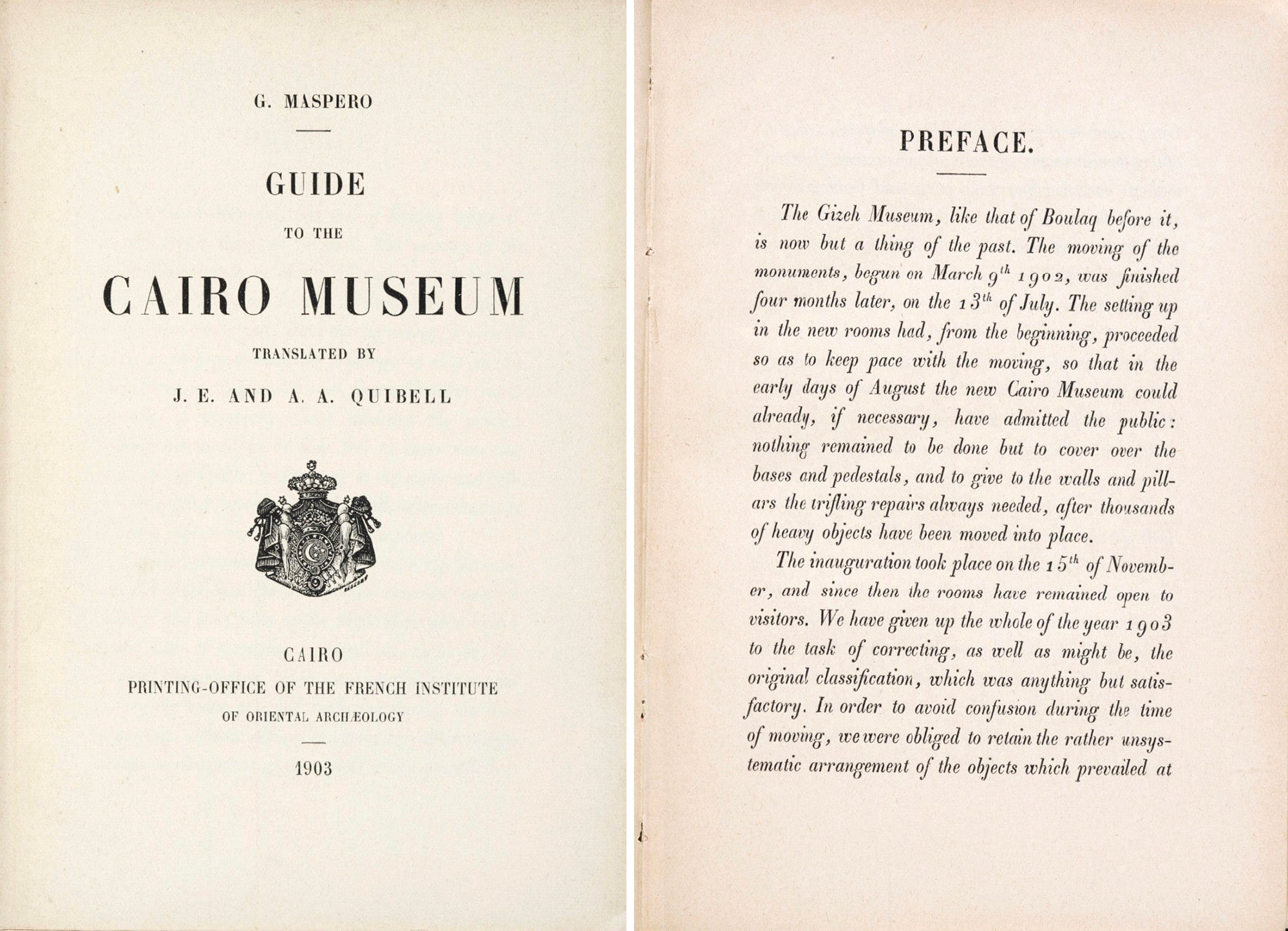
Maspero oversaw the transfer of the collections from Giza to Cairo, and on November 15, 1902, the museum opened its doors to the public. Thanks to Maspero’s efforts, we can “see” the collections as visitors did then, for he published both a French-language and English-language visitor guide (1902 and 1903, respectively). In the introduction to both guides, Maspero confesses that, to avoid confusion while moving, he followed the organizing logic of the Giza galleries. His staff consequently spent 1903 reclassifying the objects for display on the ground floor of the new institution. Thus, he considered the French guidebook “provisional” and the English guide “more complete.” He used the latter especially to correct the flaws he saw in his guides for the Boulaq Museum, in which he described every object in detail.
“[T]he most useful method of writing a catalogue is not to enumerate a vast quantity of objects,” he explains,
but rather, when treating of each category of monuments, to explain their purpose and destination, then to instance some typical examples, and to leave it to the intelligence of the visitor to apply the principles thus learned to the objects which attract his attention.
Maspero resigned his position in 1914, on the eve of the Great War. It’s difficult to overstate his influence on the exhibition of antiquities not only in Egypt, but around the world, as it was he who negotiated the system of “partage” with British archaeologist Flinders Petrie, codifying the policy that allowed foreign excavators to retain a share of new discoveries after they had been evaluated by the Antiquities Service.
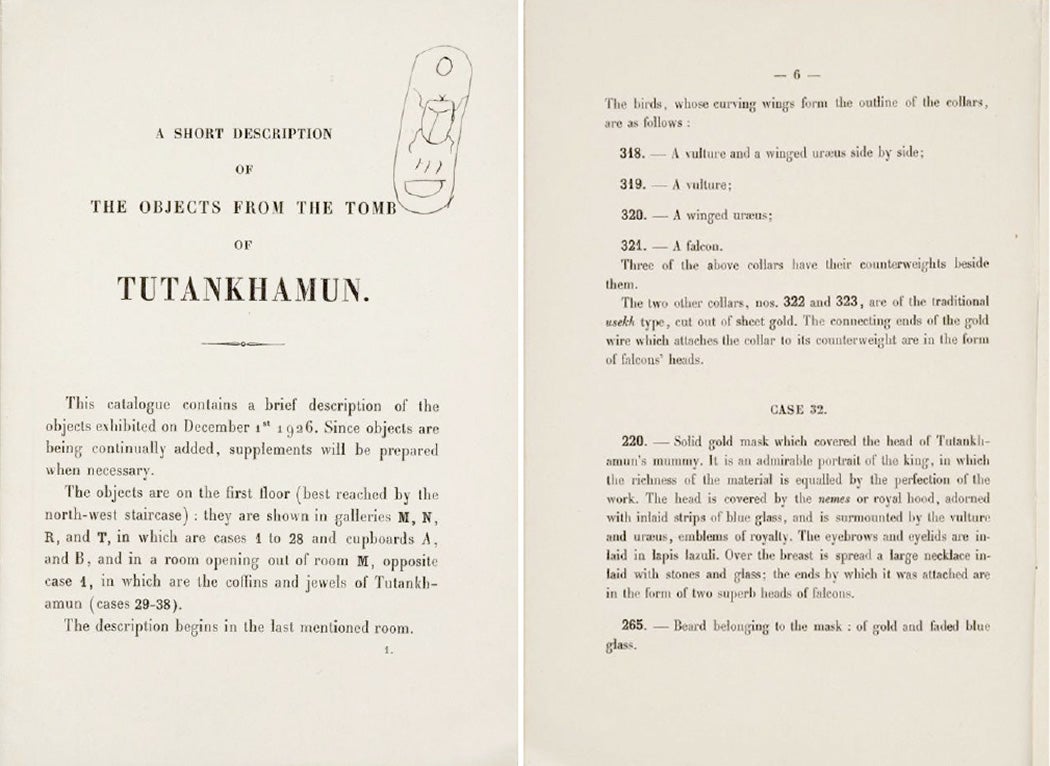
It was Maspero’s successor, Pierre Lacau, who had to handle the discovery of King Tutankhamun’s tomb by Howard Carter in November 1922. As Brian Parkinson writes, Lacau’s relationship with Carter reflected Anglo-French competition in Egypt, and his anti-British sentiments tended to favor, if passively, Egyptian nationalists when it came to the process of partage. In December 1922, the Egyptian government, supported by Lacau, revoked the conventional partage practice, insisting the Tutankhamun artifacts remain in Egypt.
On December 1, 1926, the Cairo Museum opened the first exhibition of objects recovered from Tutankhamun’s tomb. The catalogue is necessarily brief—it took Carter ten years to clear the tomb—but it already included the core objects that would come to represent the Boy King to the world: the anthropoid coffins that protected the mummified pharaoh; the funerary bed covered in gold leaf and supported by fantastic beasts; the royal scepter of gold and blue glass; and the soon-to-be-world-famous gold funerary mask, its beard detached and resting nearby.
Numerous artifacts from Tut’s tomb have made world tours, and as of July 2023, some of the better-known objects, including the gold mask, remain on view at the EMC on Tahrir Square. But the majority of the artifacts have already been transferred to their newest home at the GEM. More than 5,000 objects associated with Tutankhamun will be exhibited at Giza, and authorities have suggested that the objects on display at the EMC will be transferred soon with an appropriate ceremony. If the pageantry that marked the transfer of twenty-two mummified people from the EMC to the new National Museum of Egyptian Civilization in 2021 is anything to go by, this next step in Egypt’s exhibition history will offer the world an unforgettable experience.
More About Egypt
The Discovery of King Tut’s Tomb
Why King Tut Had A Meteorite Knife
Was It Really a Mummy’s Curse?
The Many Modes of Mummification
Support JSTOR Daily! Join our new membership program on Patreon today.
